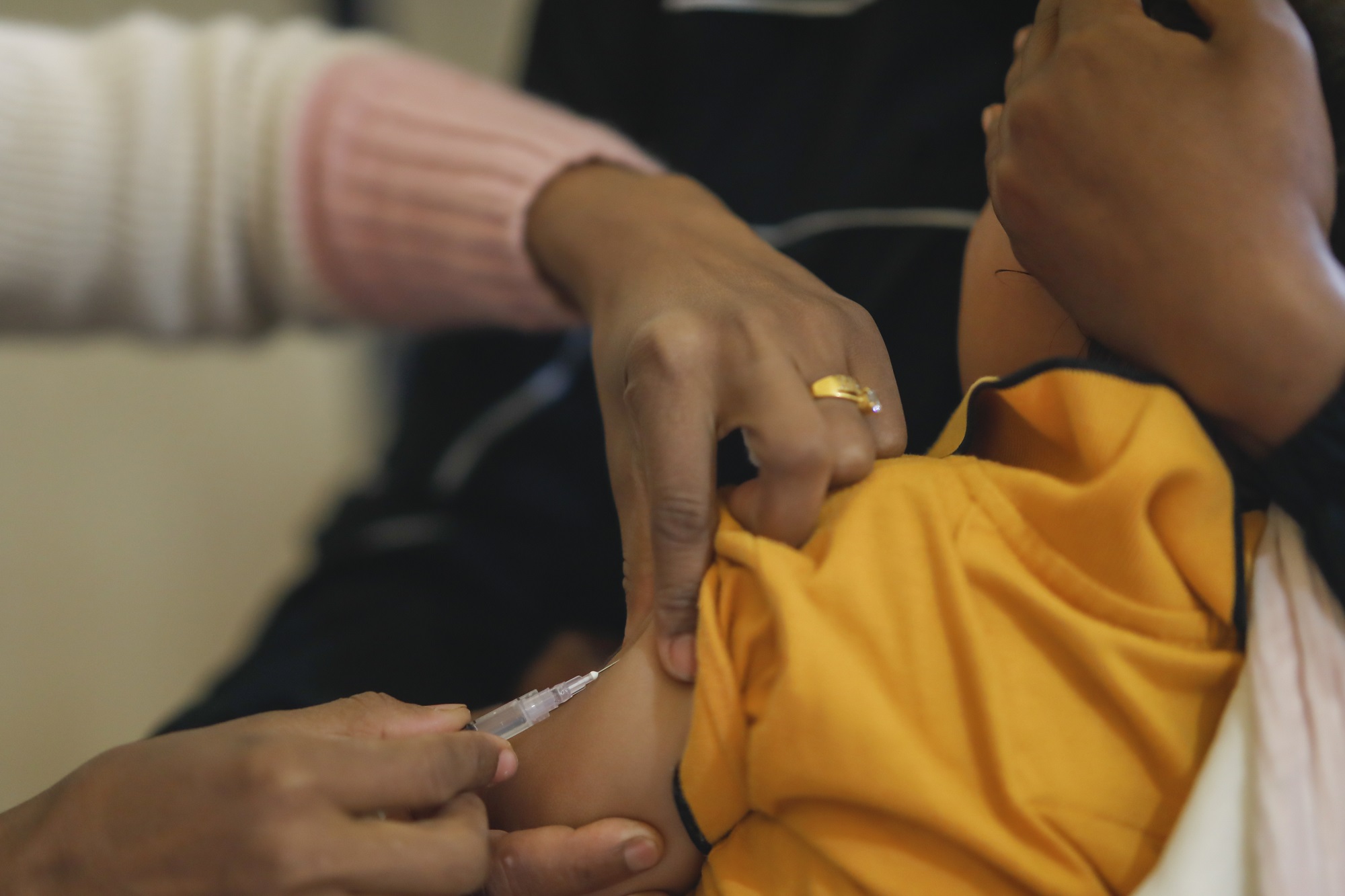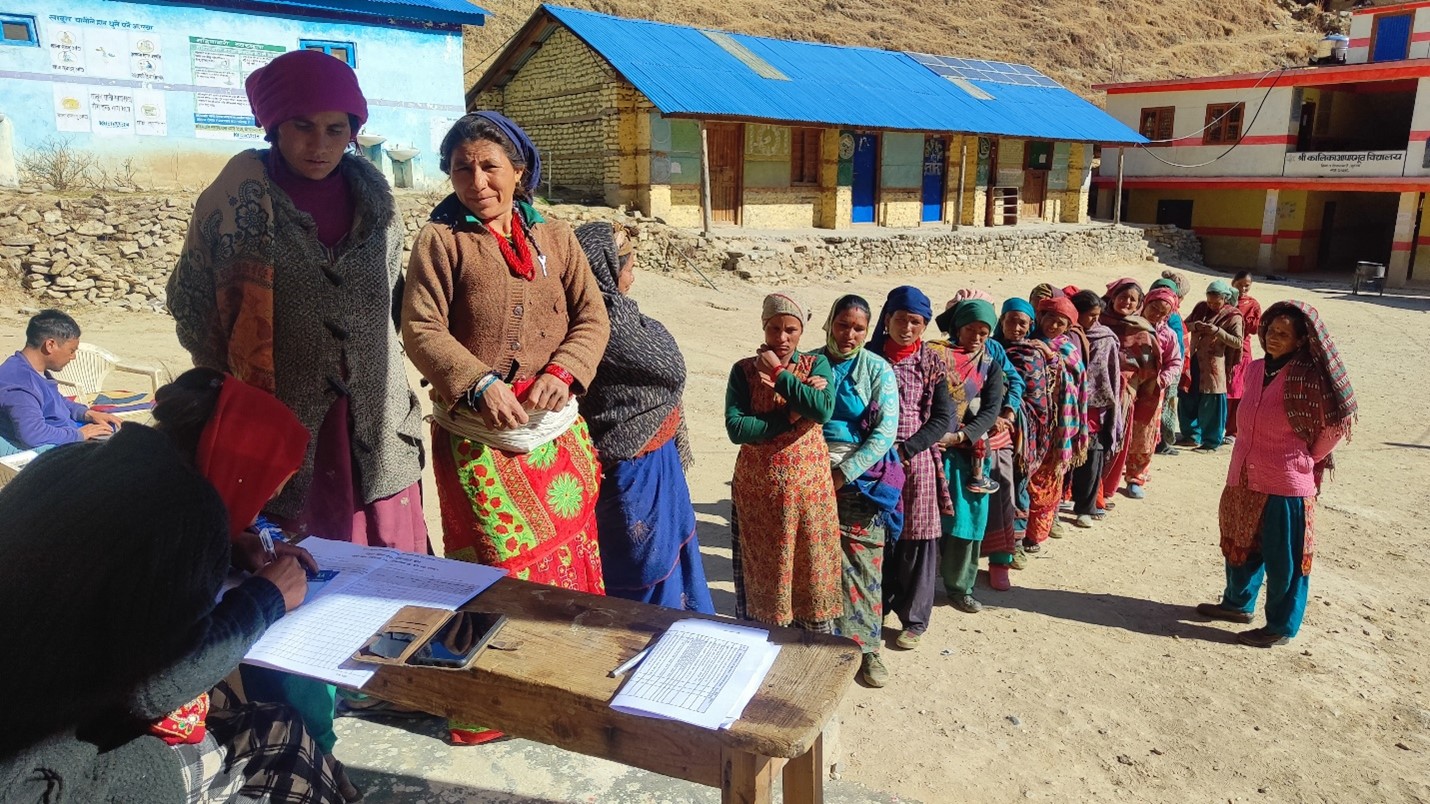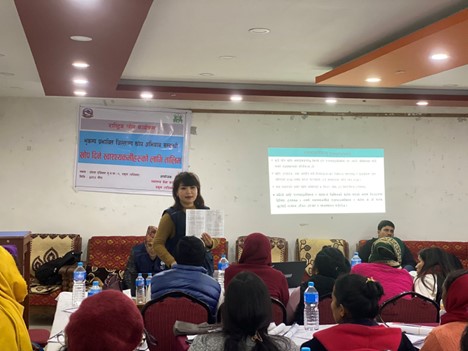On 3 November 2023, Karnali Province, a region characterized by its remoteness and hard-to-reach areas located in the western part of Nepal, was hit by a 6.4 magnitude earthquake. The disaster killed 153 people, injured over 350, and left thousands of homes damaged.
As a response to the potential threat of an outbreak of vaccine-preventable diseases following the earthquake, the Ministry of Health and Population conducted Measles-Rubella (MR) and Typhoid Conjugate Vaccine (TCV) vaccination campaigns in seven earthquake-affected districts, as per the technical recommendations of the National Immunization Advisory Committee.

A health worker vaccinates a baby with the measles-rubella vaccine at a primary health center in Surkhet, Karnali. Credit: WHO Nepal/B.Rai
The MR vaccination campaign was conducted in Jajarkot and Rukum West, two of the most affected districts, targeting children aged 6 months to under 15 years, and the TCV vaccination campaign was conducted in 7 districts (Jajarkot, Rukum West, Jumla, Kalikot, Salyan, Dailekh, and Surkhet) for persons aged 16 to 45 years.

People wait in line to register their names to obtain vaccination cards during the recently concluded TCV vaccination campaign in Jumla, Karnali Province. Credit: WHO Nepal/S.Tiwari
118 831 children were vaccinated with the MR vaccine achieving 102% administrative coverage, whereas 520,900 persons were vaccinated with the TCV achieving 75% coverage (as per preliminary reporting) in the campaign held between December 2023 to January 2024.
WHO provided technical support for the campaign planning and implementation, including operational cost support in the two highly affected districts. Support for pre-campaign activities included developing an operational guideline for conducting the vaccination campaign; developing and printing campaign materials such as vaccination cards, vaccination registers, microplanning forms and formats, and IEC materials; and conducting province-level microplanning workshops.

A WHO Surveillance Medical Officer provides training to vaccinators prior to the start of the MR and TCV vaccination campaign in Rukum West. Credit: WHO Nepal/S.Lama
WHO Surveillance Medical Officers and Technical Assistance for Immunization personnel further supported district-level microplanning workshops, training for vaccinators, district and municipality-level Immunization Coordination Committee meetings, media orientation, and Adverse Event Following Immunization (AEFI) orientation, AEFI surveillance, and monitoring of session sites during the vaccination campaign.
Measles and rubella are highly contagious viral diseases. Vaccination against measles and rubella is recommended for all children for whom the vaccine is not contraindicated. Nepal's National Immunization Program provides two doses of MR vaccine to all children at 9 months and 15 months of age through routine immunization.
Supporting Member States to achieve measles and rubella elimination is an important aspect of WHO's work in countries. This support includes working with countries to strengthen their capacity to detect possible cases of measles and rubella, respond rapidly to prevent further spread, identify and further protect populations at risk, increase the number of children reached by the vaccine through routine immunization, and conducting additional immunization activities to reach unvaccinated people.
More than 95% coverage of the first and second doses of the measles vaccine at all levels is key to interrupting measles transmission. Following a dip in coverage due to COVID-19 related disruption, Nepal has now achieved 97% administrative coverage with MR first dose and 95% with the second dose at the national level. However, coverages vary at sub-national levels. The Ministry of Health and Population is further strengthening routine immunization to achieve >95% coverage with both doses of routine MR vaccines at all levels to accelerate progress towards its goal of MR elimination by 2026.
